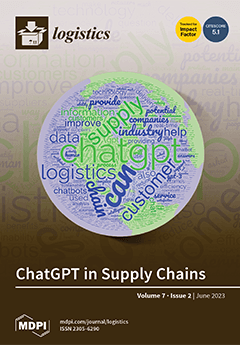Background: Nowadays, as a result of globalization, markets are more competitive, and customers are more demanding. To respond to these challenges, organizations must develop mechanisms for continuous improvement in order to eliminate waste and increase the efficiency and effectiveness of processes. Thus, the
[...] Read more.
Background: Nowadays, as a result of globalization, markets are more competitive, and customers are more demanding. To respond to these challenges, organizations must develop mechanisms for continuous improvement in order to eliminate waste and increase the efficiency and effectiveness of processes. Thus, the present study carried out at an industrial unit responsible for the customization of cork stoppers for wines had as its main objectives to identify and eliminate or at least reduce waste; improve production and internal logistics flows; balance workloads; improve productivity; reduce lead time; motivate employees and promote the spirit of continuous improvement.
Methods: The action-research methodology was used, whereby several cycles of data recovery and analysis, identification and implementation of opportunities for improvement, assessment and standardization were carried out. Therefore, the Total Flow Management (TFM) model was implemented, and several methods and tools were used, such as Value Stream Mapping (VSM), work measurement and 5S’s.
Results: Several wastes and overloads were identified, and some actions were implemented, such as workload balancing, layout changes, implementation of visual management and supermarkets. That said, it was possible to reduce lead time by 4 days, improve productivity from 26.63 ML (a thousand cork stoppers)/h to 35.75 ML/h, and promote flexibility. In addition, employees were motivated, and a culture of continuous improvement was fostered.
Conclusions: This project demonstrated that it is possible to implement improvement actions, with good results, without high investments, as well as motivating employees and taking advantage of their best capabilities. Additionally, it was demonstrated that the use of TFM can be very useful in continuous improvement, with evident improvements in production and internal logistics flows. So, this project demonstrated the practical implementation of TFM regarding basic reliability, production and internal logistics flow, and the simultaneous use of several methods and tools to implement continuous improvement. Thus, significant improvements were possible on the factory floor, as well as improving employee motivation their personal development and encouraging the focus on continuous improvement. Therefore, it responds to the gap identified in the literature.
Full article





